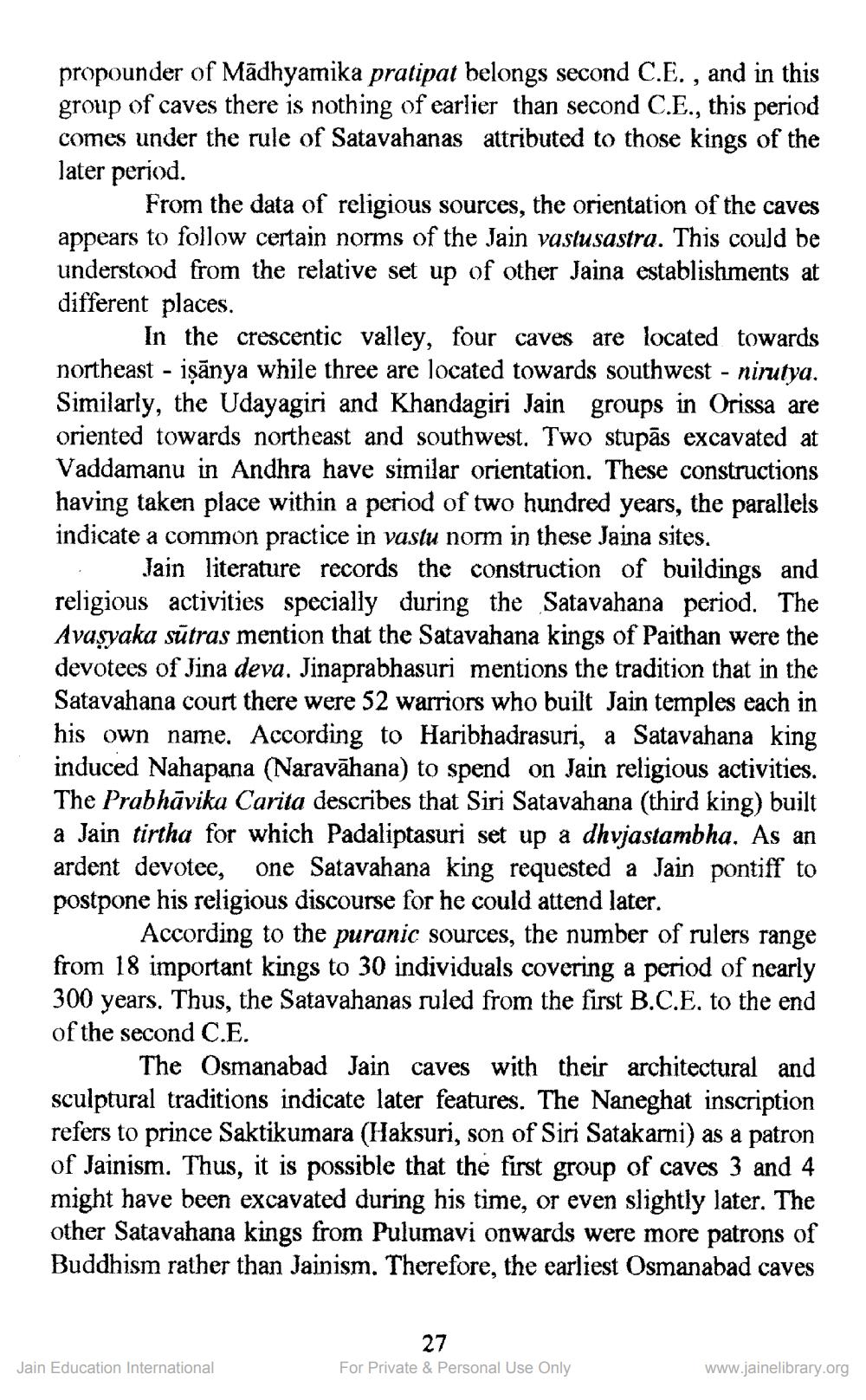________________
propounder of Mādhyamika pratipat belongs second C.E., and in this group of caves there is nothing of earlier than second C.E., this period comes under the rule of Satavahanas attributed to those kings of the later period.
From the data of religious sources, the orientation of the caves appears to follow certain norms of the Jain vastusastra. This could be understood from the relative set up of other Jaina establishments at different places.
In the crescentic valley, four caves are located towards northeast - işānya while three are located towards southwest - nirutya. Similarly, the Udayagiri and Khandagiri Jain groups in Orissa are oriented towards northeast and southwest. Two stupās excavated at Vaddamanu in Andhra have similar orientation. These constructions having taken place within a period of two hundred years, the parallels indicate a common practice in vastu norm in these Jaina sites.
Jain literature records the construction of buildings and religious activities specially during the Satavahana period. The Avasyaka sūtras mention that the Satavahana kings of Paithan were the devotees of Jina deva. Jinaprabhasuri mentions the tradition that in the Satavahana court there were 52 warriors who built Jain temples each in his own name. According to Haribhadrasuri, a Satavahana king induced Nahapana (Naravāhana) to spend on Jain religious activities. The Prabhāvika Carita describes that Siri Satavahana (third king) built a Jain tirtha for which Padaliptasuri set up a dhvjastambha. As an ardent devotee, one Satavahana king requested a Jain pontiff to postpone his religious discourse for he could attend later.
According to the puranic sources, the number of rulers range from 18 important kings to 30 individuals covering a period of nearly 300 years. Thus, the Satavahanas ruled from the first B.C.E, to the end of the second C.E.
The Osmanabad Jain caves with their architectural and sculptural traditions indicate later features. The Naneghat inscription refers to prince Saktikumara (Haksuri, son of Siri Satakarni) as a patron of Jainism. Thus, it is possible that the first group of caves 3 and 4 might have been excavated during his time, or even slightly later. The other Satavahana kings from Pulumavi onwards were more patrons of Buddhism rather than Jainism. Therefore, the earliest Osmanabad caves
27
Jain Education International
For Private & Personal Use Only
www.jainelibrary.org




